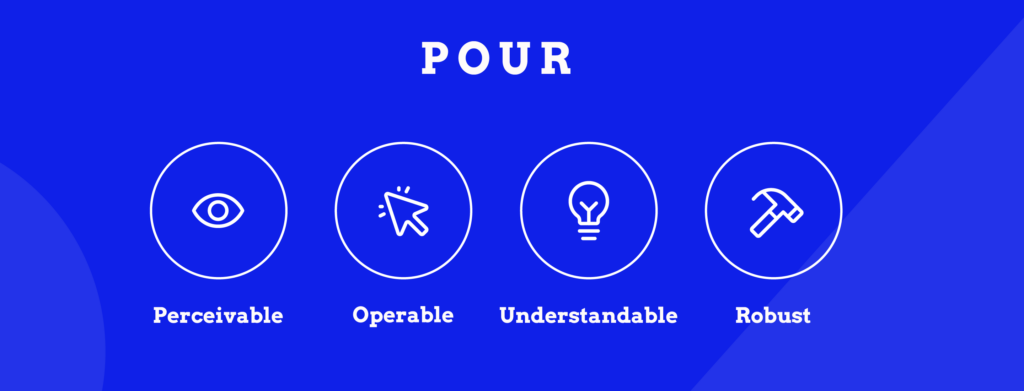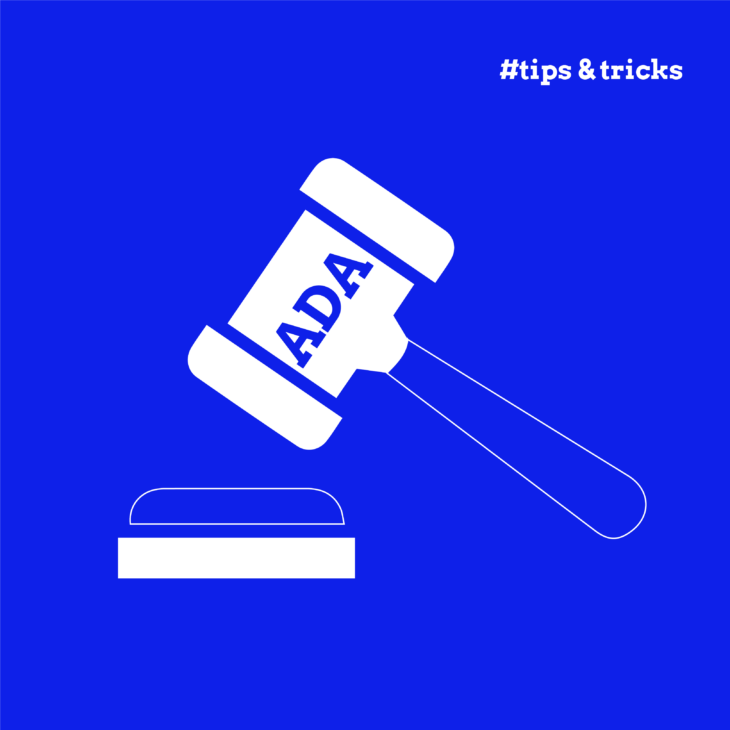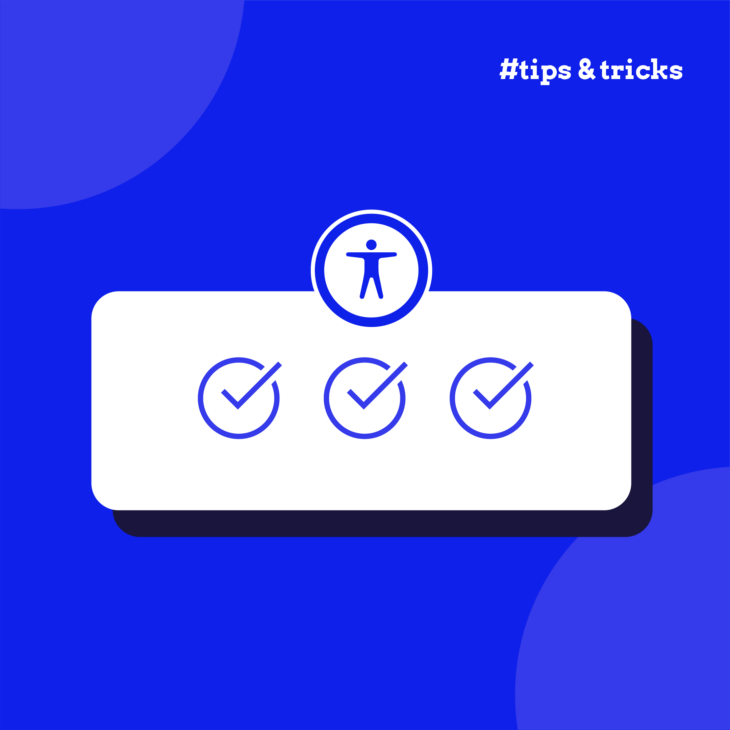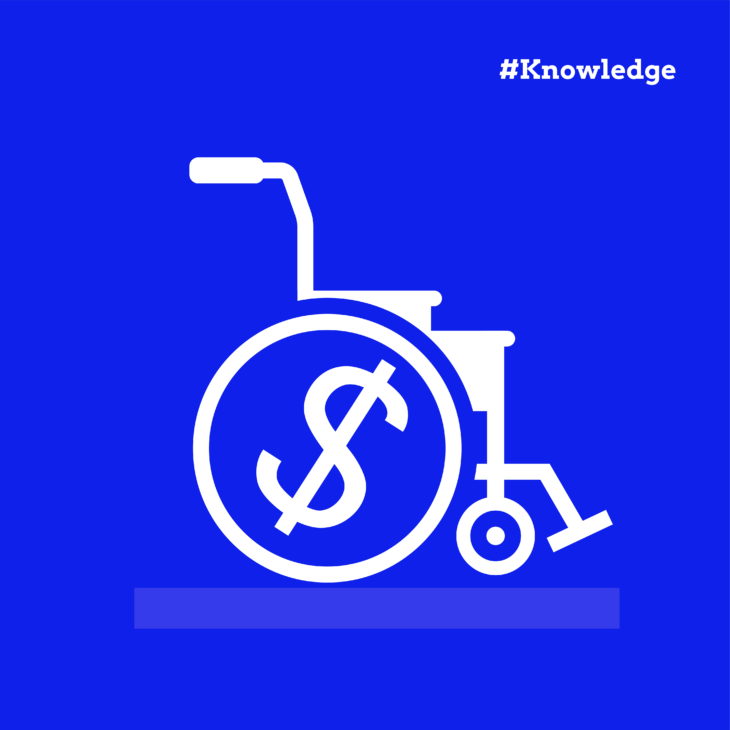Caitlin de Rooij is a Web Accessibility Specialist. She works as an Accessibility Consultant for Level Level and provides training and workshops for enhancing digital accessibility. Caitlin’s expertise lies in ensuring that websites and digital content are designed and developed to be inclusive and usable for individuals with diverse abilities and disabilities.
As more and more businesses move online, the stakes for website accessibility are higher than ever. Just in 2023, there were more than 4,600 ADA website lawsuit cases, and now that number is even higher.
What many businesses don’t realise is that they might not receive any warning before facing legal action. While some receive ADA demand letters alleging non-compliance, there’s no legal requirement to send one before filing a lawsuit. Your first notice could be the lawsuit itself.
If you’re wondering whether your website is at risk, you’re not alone. Perhaps you’ve heard terms like “WCAG compliance” but aren’t sure where to start. The cost of ignoring accessibility is steep – settlements typically range from $5,000 to $20,000, not counting legal fees. However, preventing issues through proper accessibility implementation costs significantly less.
This guide will show you how to identify high-risk issues on your site, which problems to fix first, and how to protect your business for the long term.
ADA website lawsuits in 2025: What’s at risk for your business
The numbers tell a concerning story: ADA website lawsuits have nearly doubled since 2018, with 4,280 cases filed in just the first six months of 2024. But here’s what makes this particularly worrying for business owners – 73% of these lawsuits target smaller companies with revenue under $25 million.
Let’s talk about the real costs. If your business faces an ADA website lawsuit, you’re looking at:
- Settlement costs – $5,000-$20,000 on average.
- Legal defence fees – Often match or exceed the settlement amount.
- Website remediation – Additional costs to fix accessibility issues.
- Lost time and resources dealing with legal proceedings.
Take the recent Luis Toro V Hasbro case as an example. The lawsuit claimed Hasbro’s website wasn’t accessible to people who are blind or have visual impairments. The site lacked basic features like screen reader compatibility and proper text alternatives for images – issues that could have been easily prevented with proper planning.
While Hasbro has enough money to cover the settlement and fix website issues, the reality is that most ADA lawsuits target smaller companies. These businesses often lack the resources for lengthy legal battles, making them particularly vulnerable to the financial impact of accessibility lawsuits.
The message is clear: investing in accessibility now costs significantly less than facing legal action later. Plus, it opens your business to millions of potential customers who might otherwise struggle to use your website.
Understanding ADA compliance standards

Think of website accessibility like adding a ramp to a physical shop – it’s about making sure everyone can use your website, regardless of how they access it. The Americans with Disabilities Act (ADA) requires businesses to provide equal access to their services, and yes, this includes your website.
While the ADA doesn’t spell out specific technical requirements for websites, courts consistently look to the Web Content Accessibility Guidelines (WCAG) as the standard. The current version is WCAG 2.2, with Level AA serving as the benchmark for compliance.
What does this mean in practice? Your website needs to be:
- Perceivable – Information must be presented in ways everyone can understand. For instance, people who are blind need text descriptions of images to understand them through screen readers.
- Operable – Users must be able to navigate your site regardless of how they interact with it. Someone who can’t use a mouse should be able to use keyboard controls instead.
- Understandable – Content should be clear, and operations should be predictable. Forms should clearly indicate required fields and error messages.
- Robust – Your site should work well with different technologies, including assistive tools like screen readers.
Recent court cases highlight these requirements. In the Domino’s Pizza lawsuit, for example, the court upheld that websites must work with screen readers. The Target case established that online shopping must be accessible to people with visual impairments. These rulings show that WCAG compliance isn’t optional – it’s a necessary part of doing business online.
5 practical steps to mitigate the risk of an ADA website compliance lawsuit
Now that you understand what the law requires, you might wonder, “Where do I start?” The following five steps provide a clear path forward to protecting your business from ADA lawsuits while making your website accessible to everyone who wants to use it.
1. Conduct an accessibility audit
An accessibility audit is your first line of defence against ADA lawsuits, and it’s the only way to truly understand where your website stands. While automated tools can catch some issues, a comprehensive audit combines both automated testing and manual review.
Start with free automated tools like WAVE or Axe to identify quick-fix issues like poor colour contrast, missing alt text, broken links, and missing placeholder text on forms. However, remember that these tools only catch about 30% of accessibility problems.
You shouldn’t count on tools alone and instead also include manual testing with assistive technologies like screen readers and testing by people with disabilities who can identify real-world usage barriers.
Still, the most secure way of figuring out the level of accessibility is by booking a professional accessibility audit, like the one offered by The A11Y Collective. Even though it might seem like a serious investment, an expert audit typically costs far less than a single lawsuit settlement and provide:
- Detailed reports of WCAG 2.2 violations.
- Prioritised list of issues to fix.
- Clear recommendations for remediation.
- Documentation of compliance efforts.
- Risk assessment overview.
Taeke Reijenga – Founder & trainer at The A11Y Collective“Documenting your audit and improvement efforts can help demonstrate good faith compliance if you face legal challenges.”
2. Implement essential technical requirements
Focus first on fixing the most common WCAG failures that trigger lawsuits. Here’s your priority checklist:
- Add alternative text for all meaningful images and graphics.
- Ensure your site works with keyboard navigation.
- Write descriptive links instead of “click here” or “read more”.
- Label all form fields clearly and include visible error messages.
- Maintain sufficient colour contrast (4.5:1 ratio for normal text).
- Structure your headings properly (H1, H2, etc.).
- Make sure text remains readable when zoomed to 200%.
- Provide captions for videos and transcripts for audio content.
- Keep navigation consistent across all pages.
- Use ARIA labels where needed to clarify element purposes.
Start with these changes – they’ll address the most frequent accessibility complaints and protect you from common lawsuit triggers.
3. Create and post an accessibility statement
Your accessibility statement signals your commitment to inclusion and provides necessary information for users who face barriers. Place it in your website footer and include:
- A clear commitment to making your website accessible to everyone.
- Your current level of WCAG compliance (or compliance goals).
- Known accessibility limitations and planned fixes.
- Alternative ways users can access your services if they encounter problems.
- Contact details for reporting accessibility issues.
- The date when you last updated the statement.
Keep this statement honest and specific. For example, instead of saying, “we are committed to accessibility,” describe what you’re actually doing: “We test our website monthly with screen readers and provide alternative text for all images.”
Update your statement whenever you make significant changes to your website or improve its accessibility features.
4. Train your team and establish processes
Making your website accessible isn’t a one-time fix – it requires ongoing attention from everyone who touches your website, and building a knowledgeable team starts with proper training in ADA requirements, accessibility legislation, and web accessibility principles.
The A11Y Collective offers expert-led courses suitable for both beginners and those looking to enhance their existing skills. Each course provides practical, actionable insights you can implement right away.
Start with “Web accessibility, the basics” to gain a solid understanding of current legislation and core accessibility concepts. Then, depending on your role, explore our specialized courses:
- “Accessible code” teaches developers how to write inclusive, compliant code.
- “Accessible design” shows designers how to create beautiful, accessible layouts.
- “Writing accessible content for the web” helps content creators produce inclusive content.
These courses, however, are just the beginning. You also need to make sure that you clearly outline the accessibility responsibilities of your team members and that they are fully aware of what’s expected of them. This includes putting strong quality control procedures before publishing and writing up comprehensive documentation practices for all accessibility work.
Want to enhance your team's accessibility skills?
Check out our full course catalogue to find the best accessibility courses for every role.
5. Maintain ongoing compliance
Website accessibility isn’t a “set and forget” task – it requires ongoing attention as your site grows and changes.
- Schedule regular audits at least annually to catch any new issues that might arise from website updates, content changes, or evolving accessibility standards.
- Make accessibility testing part of your routine by checking all new content and features before they go live.
- Pay attention to user feedback about accessibility problems and address them promptly – this shows commitment to improvement and helps prevent legal issues.
- Stay current with WCAG guidelines and review any third-party tools or plugins you add to your site, as these can affect your overall compliance.
- Keep detailed records of all your accessibility efforts, improvements, and regular maintenance work – this documentation proves your ongoing commitment to accessibility.
- Think of accessibility maintenance like security updates – regular checks prevent more significant problems later, and consistent attention saves time and money in the long run.
Transform your website into an ADA-compliant platform with The A11Y Collective
Making your website accessible might seem daunting, but you don’t have to do it alone. The A11Y Collective offers comprehensive guidance to help you protect your business from unwanted lawsuits while constantly improving the user experience of every single visitor.
If you go with our expert-led courses, you will:
- Learn accessibility fundamentals.
- Get hands-on experience with real-world examples.
- Access expert guidance for specific challenges.
- Stay updated with the latest accessibility requirements.
- Build skills to maintain compliance long-term.
Whether you’re just starting your accessibility journey or looking to improve existing practices, our resources help you understand compliance requirements clearly, implement practical solutions, train your team effectively, and maintain ongoing accessibility.
You could also go for our full website audit service, which includes:
- Comprehensive WCAG 2.2 compliance scanning.
- Prioritized remediation roadmap.
- Plain-language action items.
- Expert recommendations.
- Documented compliance efforts.
- Risk assessment report.
Don’t wait any longer; start your path to compliance today! Our accessibility experts will help you build a more inclusive website while protecting your business from costly lawsuits.
Take the next step towards ADA compliance
Our expert-led web accessibility audit will put your website on the path to ADA compliance through comprehensive testing, expert recommendations, and clear next steps.






